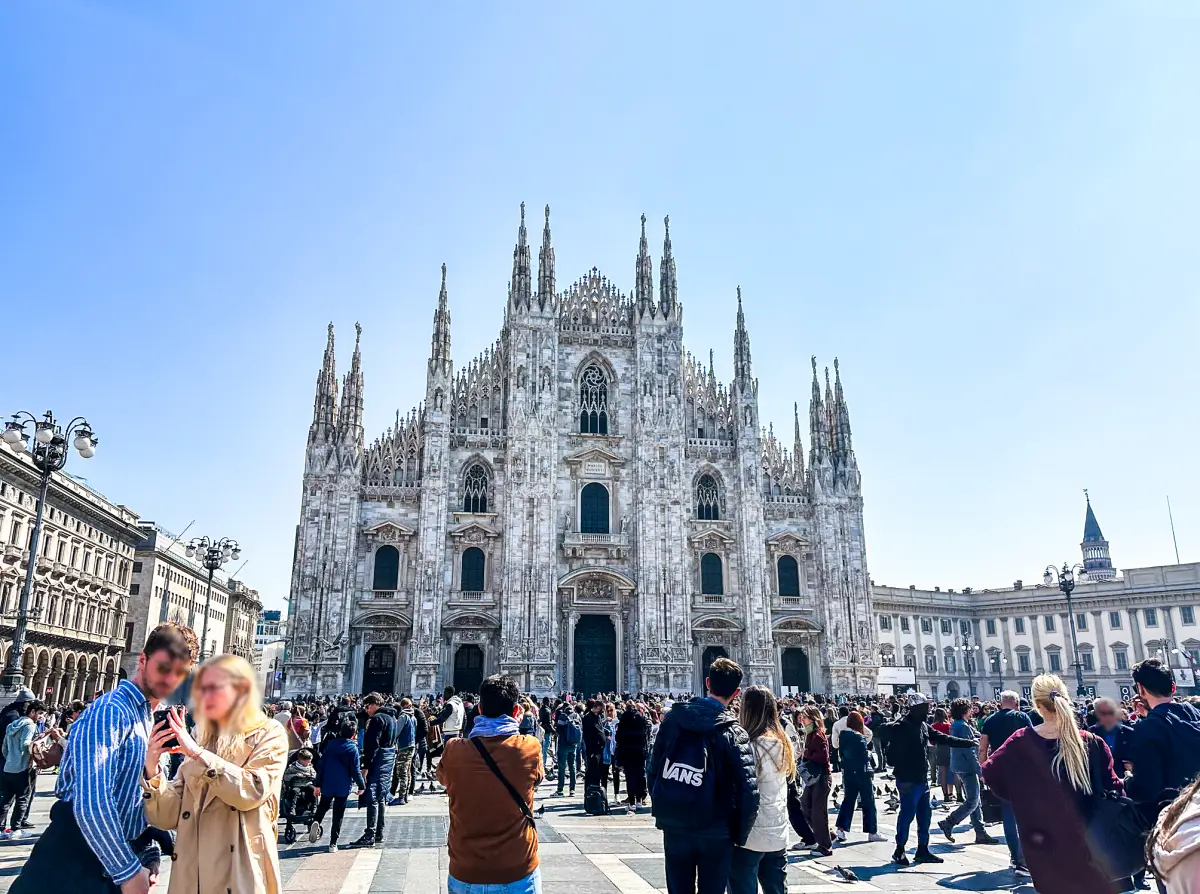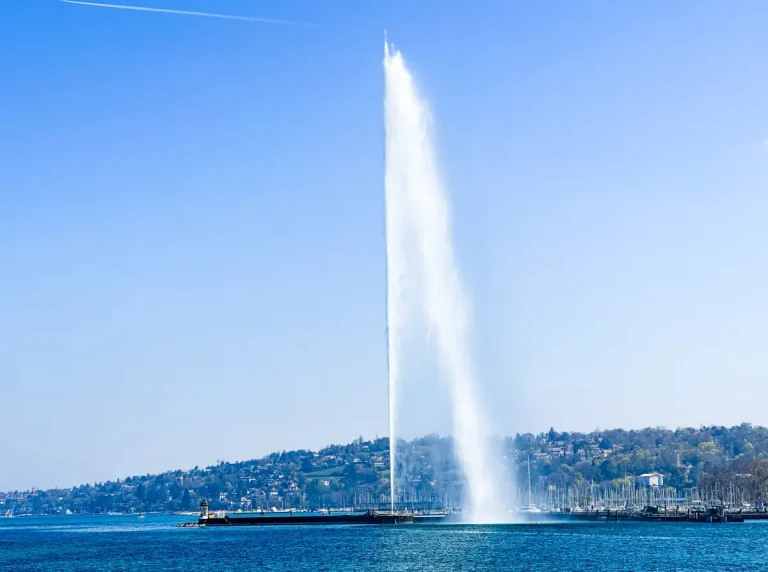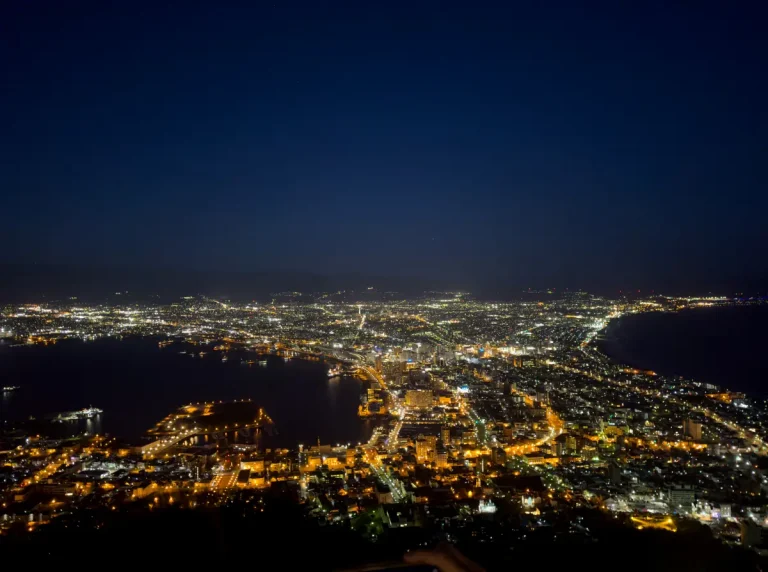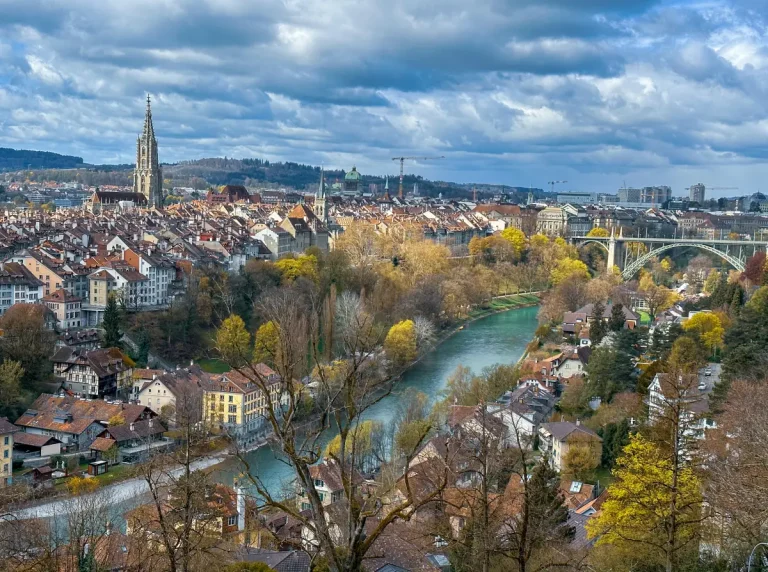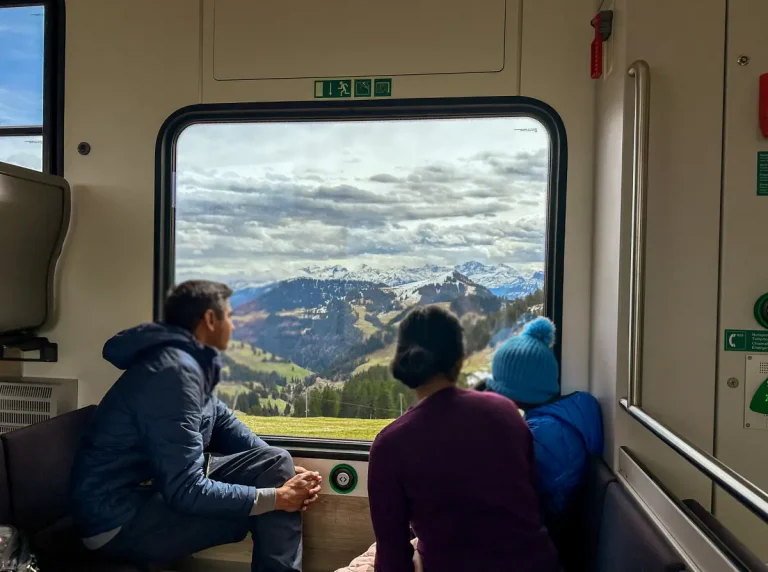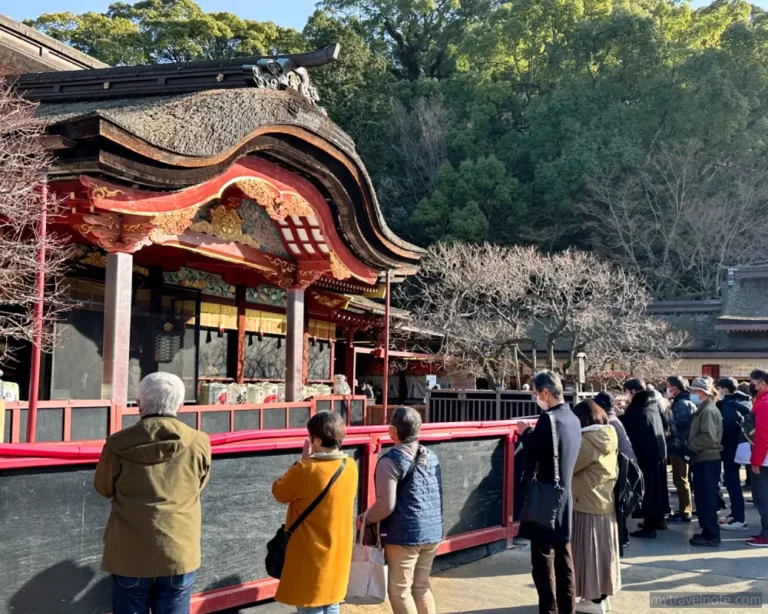Exploring Milan on Foot: Walking Routes and Wheelchair-Friendly Travel Attraction in Italy
Planning a wheelchair-accessible trip to Italy? Milan offers an incredible blend of historic architecture, world-class shopping, and cultural attractions – all while being surprisingly accessible for disabled travelers. After finishing our Milan itinerary and preparing to cross into Geneva, Switzerland, we decided to explore the city center on foot with my wheelchair-using mother despite arriving late the previous evening.
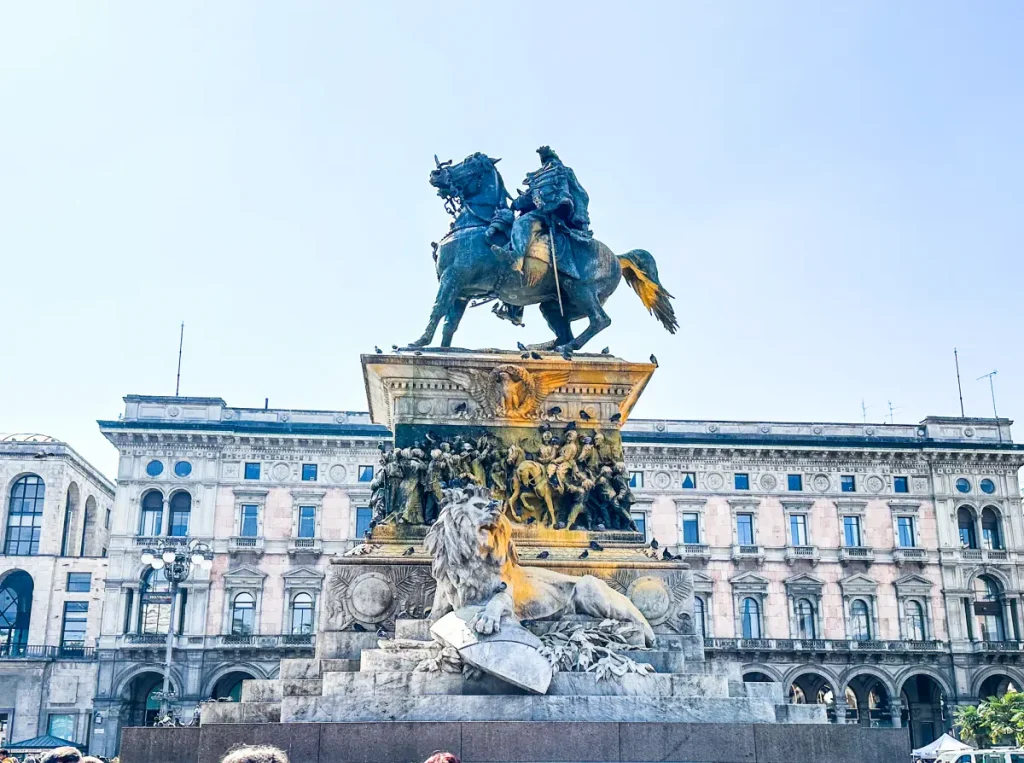
Our accommodation was about a 30-minute walk from the famous Duomo di Milano, making it perfect for a spontaneous walking tour. While Milan has excellent public transportation and subway systems, we chose to walk to avoid the challenges of wheelchair boarding and transfers on public transit. Although we had a rental car, parking in Milan’s city center can be difficult, so we left it at our hotel and embarked on our accessible Milan adventure on foot.
Milan Cathedral (Duomo di Milano)
Our first destination was the iconic Milan Cathedral, and the journey there was as enjoyable as the destination itself. The route took us past stunning historic Italian architecture and through vibrant shopping districts filled with international brand stores – perfect for those interested in accessible shopping experiences.
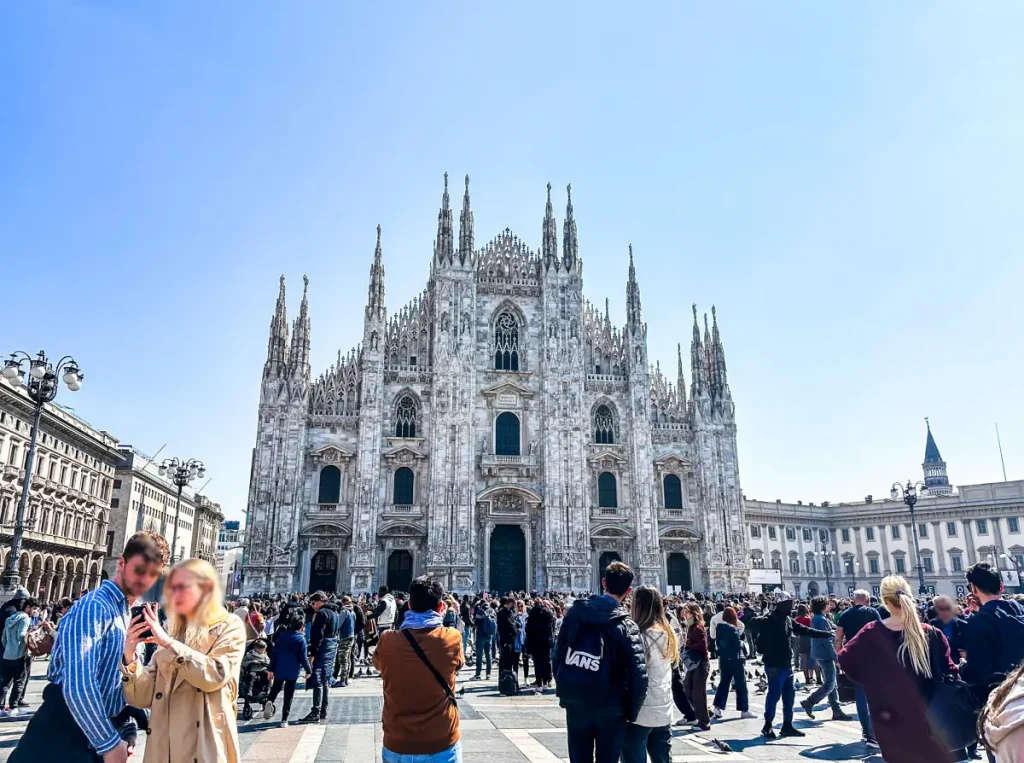
The Duomo di Milano stands as Italy’s most recognizable Gothic cathedral and one of Europe’s most impressive religious buildings. This architectural masterpiece took an astounding six centuries to complete, making it a testament to Italian craftsmanship and persistence. As we arrived on a weekend, the area was packed with tourists from around the world.
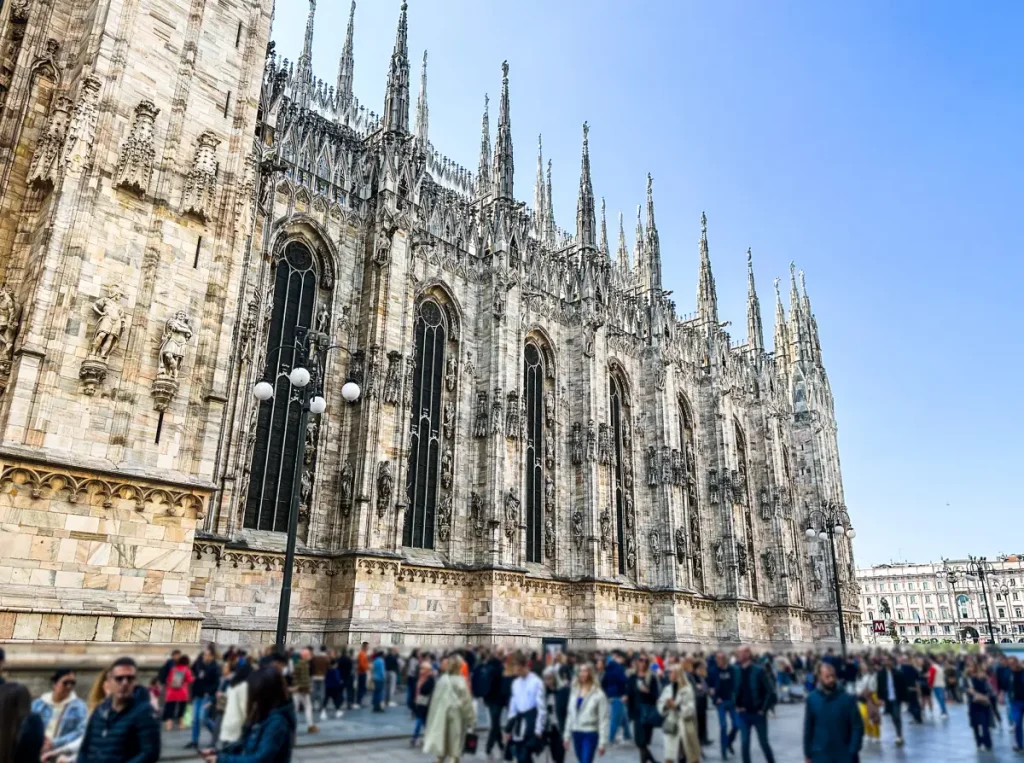
While the cathedral interior is accessible and offers guided tours, the ticket lines were extremely long. Given that waiting in line would be challenging for my wheelchair-using mother, we decided to admire the stunning exterior architecture instead. For disabled travelers planning ahead, I recommend purchasing tickets online in advance to avoid lengthy queues.
Galleria Vittorio Emanuele II: Historic Shopping Experience
Adjacent to the Duomo, we visited the famous Galleria Vittorio Emanuele II, one of the world’s oldest shopping malls. This stunning arcade features beautiful glass ceilings and historic architecture that makes it a must-see attraction for any Milan visitor. The gallery is completely wheelchair accessible with smooth floors and wide passages.
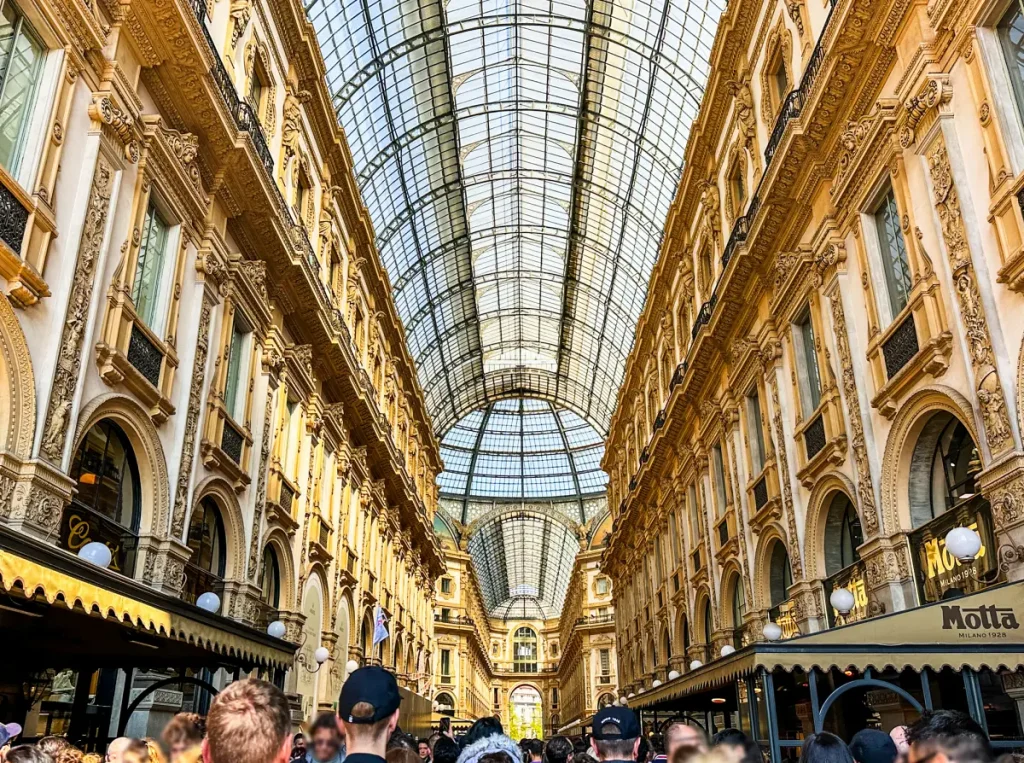
Unfortunately, we didn’t get to fully explore this magnificent space due to an unexpected pickpocketing incident that left us shaken. While we were fortunate to recover our cash, the experience cut our visit short. For future travelers, this serves as a reminder to stay vigilant in crowded tourist areas, especially when traveling with mobility equipment that might make you a target.
Santa Maria delle Grazie: Home of Da Vinci’s Last Supper
Our next stop was Santa Maria delle Grazie, a stunning Renaissance church famous for housing Leonardo da Vinci’s “The Last Supper” fresco. This UNESCO World Heritage site attracts visitors from around the globe, making advance reservations absolutely essential.
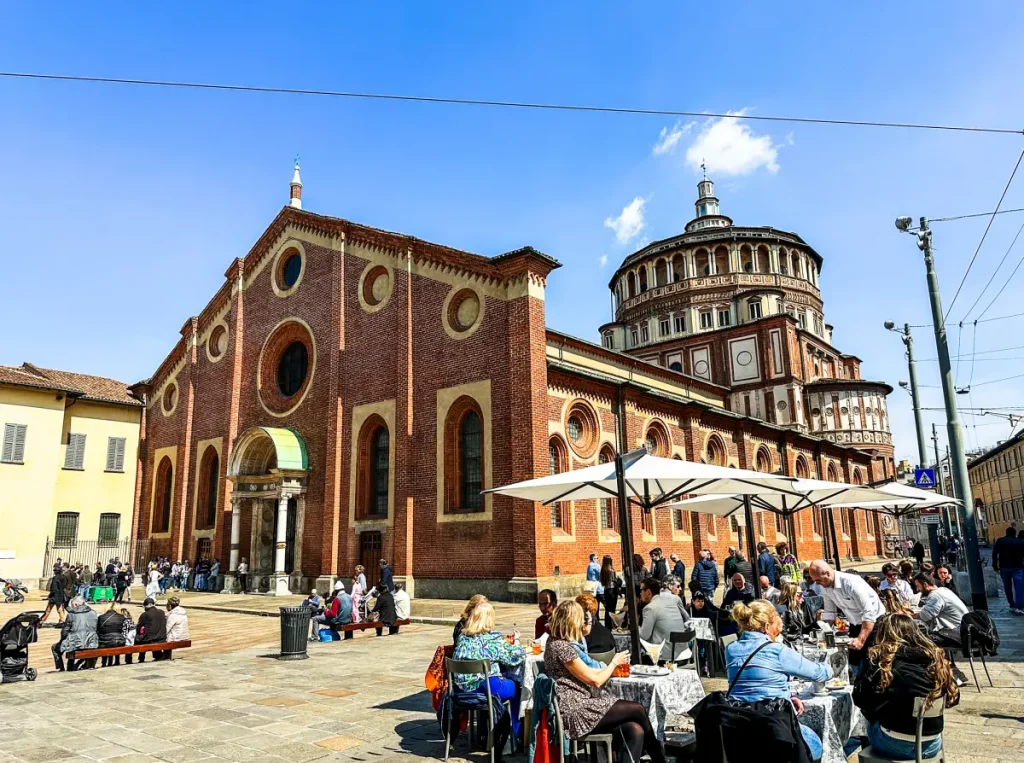
Unfortunately, when we arrived, all viewing slots for da Vinci’s masterpiece were fully booked. The Last Supper viewing requires timed entry tickets that often sell out weeks in advance, so I strongly recommend booking these tickets as soon as you confirm your Milan travel dates. Despite missing the fresco, the church’s beautiful architecture and accessible entrance made it worth the visit.
Sforza Castle (Castello Sforzesco): Medieval Marvel in the City
Next, we explored Sforza Castle, a magnificent medieval fortress located in central Milan. This historic castle now houses several museums and art galleries, while the surrounding Sempione Park provides a peaceful green space for Milan residents and tourists alike.
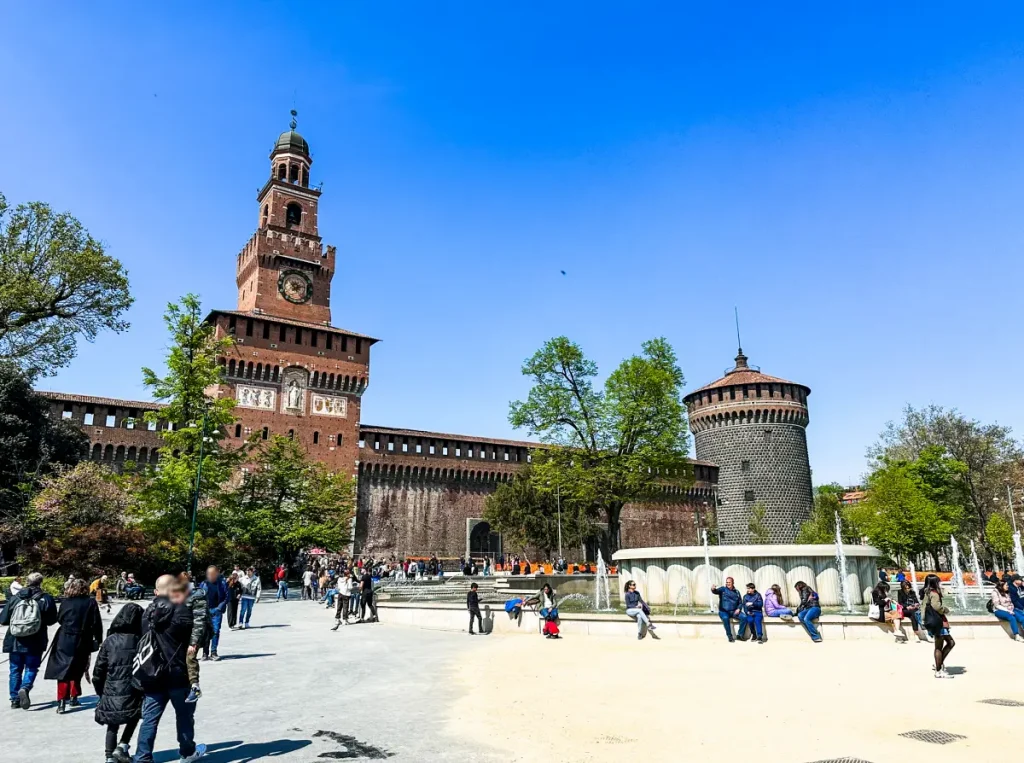
The castle grounds are largely wheelchair accessible, with paved pathways and minimal elevation changes. We spent time exploring both the exterior fortifications and the interior courtyards before continuing our accessible Milan tour.
Eataly: Gourmet Food Shopping Experience
On our way back to the hotel, we stopped at Eataly, Milan’s premier Italian food market. This upscale grocery store offers an incredible selection of authentic Italian products, from olive oils and wines to fresh pasta and artisanal cheeses.
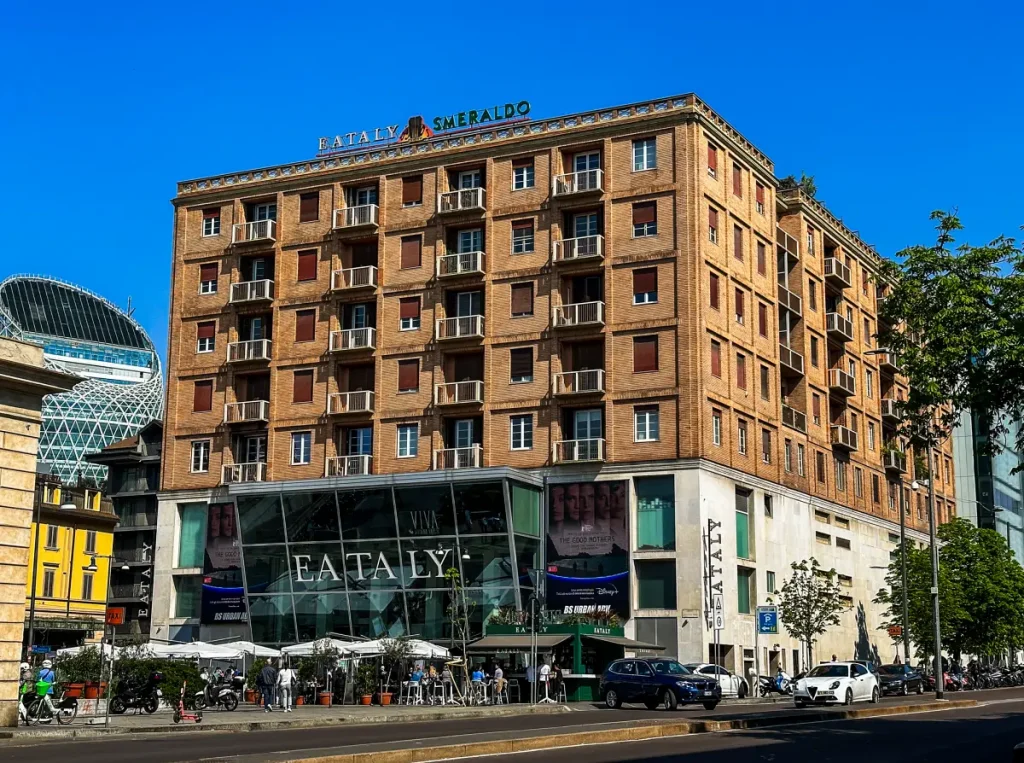
My mother was particularly excited to find high-quality olive oil to take home as a souvenir. The store features wheelchair-accessible aisles and restrooms, making it comfortable for disabled visitors to browse and shop. Eataly is an excellent stop for food lovers and anyone wanting to bring authentic Italian flavors home.
Bosco Verticale: Sustainable Architecture Wonder
Our final sighting was the striking Bosco Verticale (Vertical Forest), which we encountered while walking back to our accommodation. This innovative residential complex consists of two high-rise towers completely covered in trees and plants, creating a unique “vertical forest” in the heart of Milan.
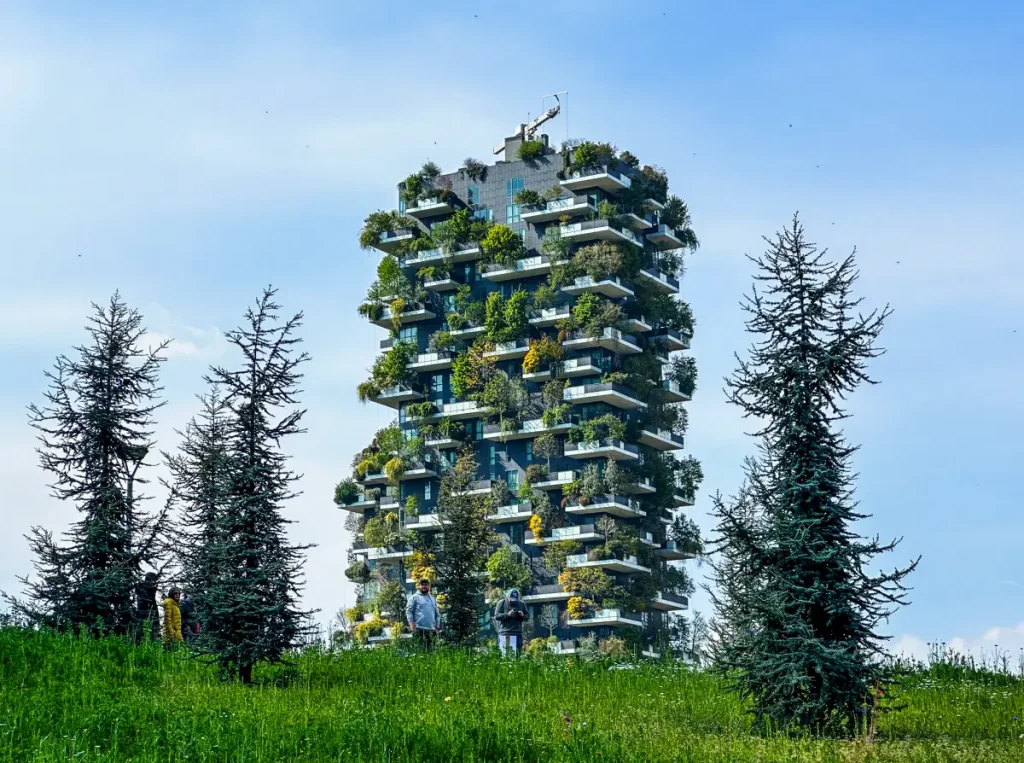
While we didn’t specifically seek out this modern architectural marvel, stumbling upon it provided a fascinating contrast to Milan’s historic buildings. The towers represent Italy’s commitment to sustainable urban development and green architecture. My mother was so impressed that we stopped to take numerous photos of this engineering and environmental masterpiece.
Conclusion: Milan’s Accessibility Potential
Despite the challenges of cobblestone streets and crowded tourist areas, Milan offers substantial opportunities for wheelchair-accessible travel. The compact historic center, improving public transportation infrastructure, and growing awareness of accessibility needs make it an increasingly welcoming destination for disabled travelers.
While our day included some unexpected challenges, we successfully visited Milan’s most iconic attractions while accommodating wheelchair accessibility needs. The city’s blend of historic architecture, modern amenities, and cultural richness creates memorable experiences for travelers of all abilities.
For those planning accessible travel to Italy, Milan serves as an excellent starting point, offering urban accessibility features that can be harder to find in smaller Italian cities. With proper planning and realistic expectations, wheelchair users can enjoy the fashion capital’s incredible attractions, cuisine, and atmosphere.

